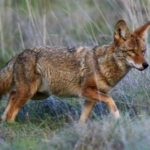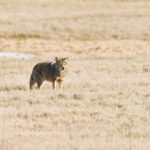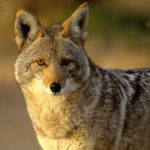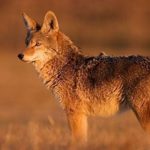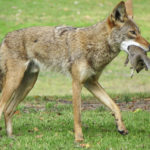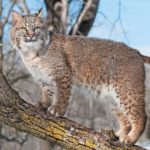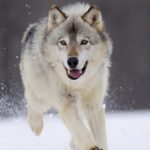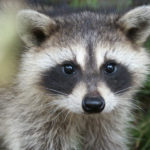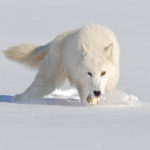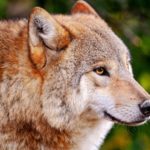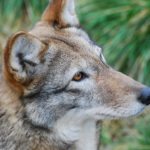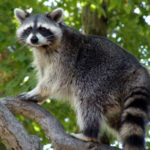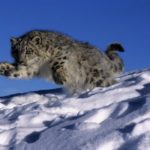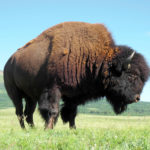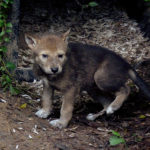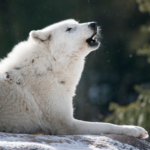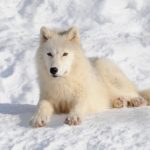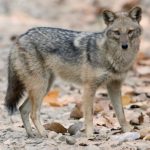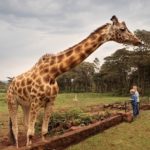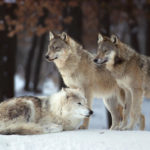Coyotes
 From the Aztec language, “coyote” translates as “barking dog”, which is not surprising, since this beast is the indigenous inhabitant of North America. Not so long ago he was exclusively a resident of the prairies, but now he is found across the continent from Alaska to Los Angeles. The reason for this is one – in the last hundred years a large number of ordinary and red wolves have been destroyed. Wolves are direct food competitors of coyotes. Now coyotes are found not only in deserted areas, but also near towns and villages.
From the Aztec language, “coyote” translates as “barking dog”, which is not surprising, since this beast is the indigenous inhabitant of North America. Not so long ago he was exclusively a resident of the prairies, but now he is found across the continent from Alaska to Los Angeles. The reason for this is one – in the last hundred years a large number of ordinary and red wolves have been destroyed. Wolves are direct food competitors of coyotes. Now coyotes are found not only in deserted areas, but also near towns and villages.
The coyote is much smaller than the wolf, has a body length of 75-100 cm, and a weight of 13-21 kg. Males slightly larger than females. In the northern regions, animals are larger (up to 34 kg), and in the south less (11 kg). Outwardly and in a way of life, a coyote is similar to a jackal. Has 42 teeth, 4 incisors, sharp erect ears, long fluffy tail (the tail keeps running down when running). The coat is about 8 cm long on the back and 12 between the shoulder blades (called a mane or a scab), and has a grayish or rusty-brown color. On the abdomen, the color is much lighter than on the back, the tail at the end is black. On the wool a large number of gray and black spots that help the coyote remain invisible on the ground. The mane is also lighter than the rest of the color.
Coyote, although a predator, but is omnivorous. In general, the coyote hunts gophers, marmots, small rodents, rabbits, rabbits, frogs, newts, meadow dogs. Coyote is a good swimmer, he allows him to hunt fish and other dwellers with a pond. Also hunts raccoons, beavers, ferrets, opossums, eats birds and insects. In autumn, with pleasure, eats berries, nuts and fruits.
With the onset of winter, the coyote begins to eat carrion. Often follows the herds of large animals, killing the weakened and eating the dead. Coyote never attacks people. In national parks, coyotes are so used to people that they even allow themselves to be fed.
In general, the coyote prefers to dwell in prairies and deserts. Very rarely it can be found in the forests – the beast loves the open countryside. The habitat divides with the jackals. It occurs in mountainous areas up to 3000m above sea level. To the anthropogenic area adapts very easily and quickly. Despite the persecution, the coyote population even increased its range.
Coyotes communicate with each other using voice signals. The animal’s howl is very beautiful, although a bit scary – it really scares the tourists. With the help of howling, barking and whining, the coyote transmits messages to the relatives. So expresses their emotions – fear, anger, submission, etc.
Coyote has a large number of enemies, but the main one is a man. People sent dogs down on them, set traps, burned the habitat, poisoned them with poisonous chemicals, but the coyote still survived. And it should be noted that the actions taken by man to destroy coyotes, brought no less damage to the entire ecosystem as a whole. So over time, the drug 1080 was banned. This pest was most successful in destroying the coyote population, but at the same time, it inflicted huge damage on other living creatures, accumulating in water and grass, which was the main reason for its prohibition.
Among the predators, the enemies for the coyote are the wolf and the fox – they are the main competitors in the production of food. Young couples are often attacked by cougars, eagles, dogs, owls, wolves, and sometimes other coyotes. Less than half of all cubs live to full maturity.
